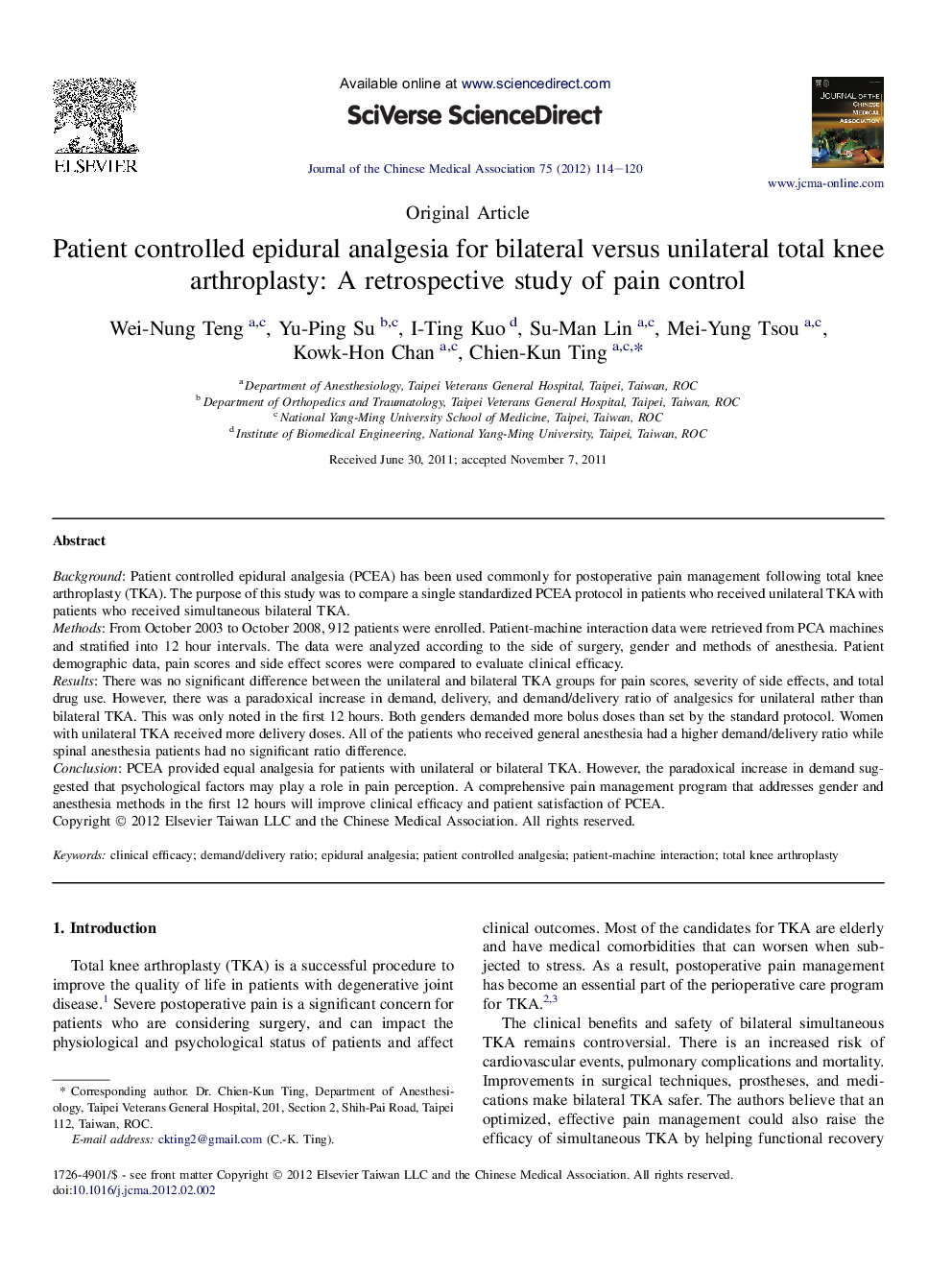| Article ID | Journal | Published Year | Pages | File Type |
|---|---|---|---|---|
| 3476581 | Journal of the Chinese Medical Association | 2012 | 7 Pages |
BackgroundPatient controlled epidural analgesia (PCEA) has been used commonly for postoperative pain management following total knee arthroplasty (TKA). The purpose of this study was to compare a single standardized PCEA protocol in patients who received unilateral TKA with patients who received simultaneous bilateral TKA.MethodsFrom October 2003 to October 2008, 912 patients were enrolled. Patient-machine interaction data were retrieved from PCA machines and stratified into 12 hour intervals. The data were analyzed according to the side of surgery, gender and methods of anesthesia. Patient demographic data, pain scores and side effect scores were compared to evaluate clinical efficacy.ResultsThere was no significant difference between the unilateral and bilateral TKA groups for pain scores, severity of side effects, and total drug use. However, there was a paradoxical increase in demand, delivery, and demand/delivery ratio of analgesics for unilateral rather than bilateral TKA. This was only noted in the first 12 hours. Both genders demanded more bolus doses than set by the standard protocol. Women with unilateral TKA received more delivery doses. All of the patients who received general anesthesia had a higher demand/delivery ratio while spinal anesthesia patients had no significant ratio difference.ConclusionPCEA provided equal analgesia for patients with unilateral or bilateral TKA. However, the paradoxical increase in demand suggested that psychological factors may play a role in pain perception. A comprehensive pain management program that addresses gender and anesthesia methods in the first 12 hours will improve clinical efficacy and patient satisfaction of PCEA.
